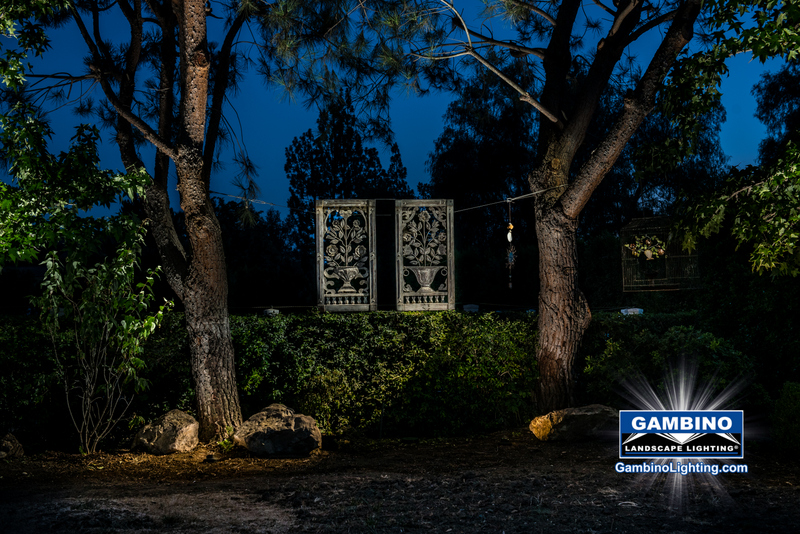17 Nov How Gambino Landscape Lighting determines if a project is a good fit
By Mike Gambino
There have been very few instances where we have taken on a project that I thought was a good fit, but ended up being a bad one.
Although sometimes it happens to all professional design build landscape lighting contractors. We do our best to make sure this doesn’t occur.
Sometimes we get an intuition (we trust it!) but not always. Sometimes bad fits blindside us and we have to dig our way out of the mess.
Here are a few ways we pinpoint whether a project is a good fit or not.
 Are we excited to work on the project?
Are we excited to work on the project?
When we think about the project, are we excited to work on it? Apathetic? Already dreading it ? When I’m not interested in a project, at least mildly, our work and the project can suffer.
When excited about working on something, and enjoy the work, you are more likely to pay greater attention to details, go above and beyond to ensure that you’re creating the best landscape lighting system possible for the client, and produce something that both us and our client are proud to show off.
But when you dread working on a project, either because you don’t like the client, or the project itself is not what you want to be working on, then it’s hard to stay motivated. Figuring out a tough design or technical wiring situation becomes a nightmare instead of a fun challenge. You start to resent the project and/or the client and cringe just thinking about the work you have left to do.
The honest truth is that we’re not going to love our jobs every day. Sometimes it doesn’t matter how fun the project is, we have bad days. And we’re not going to love every single project or client that we work with. But we should never work with someone who is such a bad fit that we have zero enthusiasm about the whole thing. It’s not fair to us, and it’s not fair to the client.
We approach each potential project with the question, “Would I do this for free?” If the answer is a resounding “YES!” or “NO!” then we know where you stand (and if you answer NO to every inquiry, you might want to change professions). But more often the answer is somewhere in the middle.
I take some time and really consider whether I want to do the project. Take money out of the equation. Is this something I would enjoy working on?
Is the client the type we normally serve?
We do our best to attract ideal clients that value what we offer but we still get inquiries from people who fall outside of our target market. In this case we need to consider whether it’s a project we want to take on.
These projects that fall outside of our target audience can pay well, but often have less benefit to our businesses because adding them to our portfolio dilutes our brand and focus. Working on projects like this will likely only attract more people who fall outside of the audience we’re trying to work with. And, working with these clients makes us unavailable if someone in our audience does come along.
So should we take on a client who isn’t part of our target audience? It depends. If they’re a great fit otherwise, and we don’t have someone we’d rather work with waiting at the time, then it could end up being a fun project and shake things up a bit by allowing us to do something new.
 Is the client willing to pay our rate?
Is the client willing to pay our rate?
I don’t like to wait before talking rough numbers. I try to get an idea as soon as possible to see if the client is willing to pay my rates. This typically happens in the first conversation when I tell them there is a nominal fee to come out to their site and discuss their project, prepare a proposal also known as a consultation fee. If they aren’t willing, they normally disappear, or will tell me that others come out for free and if I’m interested in the project I will do the same.
Clients who are looking for deals, tend to expect the most and pay the least.
If the prospect is insistent that we work on speculation (“we have neighbors who will use you too”) I can guarantee that they’ll try to haggle the entire project and become a problem.
Are we capable of the work involved?
Unlike other service providers (we’ve been called to fix their work) under no circumstances am I ever going to agree to do work that we are not familiar with and confident we can do and get stuck to hire someone else to come in and trouble-shoot things that were beyond our knowledge (and area of expertise).
No one should knowingly go into a project they’re not capable of completing, unless they have plans to hire out that work to someone who is willing and capable of completing it.
Before accepting any project, I take an honest assessment of the skills that the project will involve, and whether we’re capable of doing them.
Reaching a little bit outside our comfort zone and learning on the job is part of being a professional, and if you don’t learn anything from your projects, you may need to reach a little farther. But you shouldn’t be completely over your head with no clue where to start.
And your clients shouldn’t suffer due to your inexperience. You can learn, but you shouldn’t learn at your clients’ expense. You should practice, test, and make sure you understand what you’re doing before you risk a client’s investment over a payday for yourself. And if we mess up we make it right.
 Can we communicate with the client clearly?
Can we communicate with the client clearly?
Clear communication between the service provider and the client is crucial for the project to go smoothly.
You can be excited about the project, and completely capable of seeing it through, but if you and the client can’t communicate, then the project is doomed before it even begins.
You must be on the same page, and speaking the same language as your client. It doesn’t matter how amazing the project sounds, if you don’t understand what the client wants, you’re not going to be able to deliver it.
If struggling to communicate with a client who otherwise seems like a great fit, how can we communicate more clearly. Can we include photos in our emails? Can we meet on site or speak on the phone once a day? Can we use her language so you know that when she’s talking about?
If you can’t get clear on your communication, you may end up with a failed project.
Are we All clear on the goal of the project?
A landscape lighting project without a goal serves no purpose. We need to ask and know why our clients want a custom landscape lighting system, and everyone needs to be clear on what the lighting system will be designed to accomplish. If our client isn’t clear on why the need a landscape lighting system, we will have to help them dig deep and figure out what the purpose will be.
Some clients may be clear from the moment they contact you, others might need some hand holding, and still others may be unwilling to think past, “I just know I need one,” which helps no one.
When clients are unclear about why they need a landscape lighting system, and refuse to get clear, it doesn’t matter how clear YOU are, you’ll run into problems.
 Is the client organized?
Is the client organized?
When a client is all over the place, it can be really hard to do our job. Look at how the client writes her emails–are they organized and thought-out? Or does she seem to start typing in the middle of a thought and expect you to be able to interpret?
When you converse with her, is she frazzled and disorganized, jumping from one idea to the next, or does she give thoughtful responses to your questions?
When you ask her the initial questions you need in order to put together a quote, do her responses make sense and seem well thought-out?
Working with disorganized clients can quickly become a nightmare. If a client is disorganized on initial contact, it’s very unlikely that she’ll get organized when the project begins.
Is the timeline realistic?
Sometimes clients want things done yesterday, and unless you’ve have no other work, you can’t make that happen. So we look at the timeline the client is requesting, and whether it matches our schedule or not.
If the timeline does not match our schedule, is the client willing to adjust their expectations and go with the schedule that we recommend? If yes, great! If not, will they pay extra to get the project done on their schedule?
Unless a client is making it worth our while to work extra hours and weekends, and we’re willing to do that, then an unrealistic timeline will just stress both out and create problems.
Are we both on the same page?
Us and our client needs to be on the same page, from price, to project management system, to timeline. We let clients know what to expect before we start working together. Our proposal agreement outlines our basic procedures, how we’ll communicate during the project, what is expected of the client and at what stage feedback and payment is due, as well as any other pertinent information that the client needs to know before we get started.
Likewise, we need to be on the same page as our client, in terms of what we’ll be providing in exchange for their money. While the actual scope of work may come after the initial screening process, we can nail down the basics, like what type of system it is, early on. It’s very important to outline at least a rough scope early on, so that we’re both on the same page about what the end product will be.
What does my intuition tell me?
Most successful business people will tell you: you should always trust your gut.
Sometimes you recognize that something is wrong, but you can’t form the proper thought. Trust your instincts and avoid any project that just doesn’t feel right.
Is that project a good fit for us?
Bad fits don’t necessarily mean bad clients. If we’re not excited to work on a project or it doesn’t fit the audience we’re trying to attract, we pass it on.
If a project is beyond our skill set, we pass it on to someone with more experience.
When a client isn’t clear on their goals, or is too disorganized, we’ll spend most of the project trying to wrangle our client, instead of producing great work. And if a client isn’t willing to pay for our expertise, or demands unrealistic timelines, the chance for hard feelings is multiplied many times.
If we can’t even talk to our client, it doesn’t matter how great the project could be–we’ll never be on the same page. We can try to adapt our communication, but if that fails, then it’s better to pass the project to someone who understands the client so that there aren’t communication issues the whole way through.
And finally, we trust our intuition. It won’t steer us wrong.
 This landscape lighting blog is published by Mike Gambino of Gambino landscape lighting inc. all
This landscape lighting blog is published by Mike Gambino of Gambino landscape lighting inc. all  rights reserved. Mike is a professional landscape lighting system designer/ builder and has been designing, installing and maintaining landscape lighting systems for more than 27 years. Mike resides in the Los Angeles area with his wife and 2 sons. To visit his website go to www.Gambinolighting.com . To inquire about hiring Mike please click here .
rights reserved. Mike is a professional landscape lighting system designer/ builder and has been designing, installing and maintaining landscape lighting systems for more than 27 years. Mike resides in the Los Angeles area with his wife and 2 sons. To visit his website go to www.Gambinolighting.com . To inquire about hiring Mike please click here .
Blog articles may be published with permission on other websites without editing or removing links.



No Comments